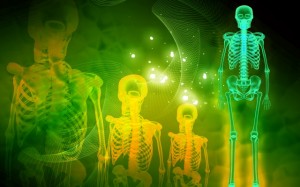 Isn’t it as simple as calories in, calories out? Not necessarily!
Isn’t it as simple as calories in, calories out? Not necessarily!
Scientists LOVE to talk about the simple calorie. There is a reason for that. Calories are cheap to estimate, the math is easily done, and its a very popular measurement in a variety of scientific disciplines. If you want to get published, focusing on calories instead of other measurements of energy helps get you published, and we know that in the world of professional science, its “publish or perish.”
In reality, there are other aspects that we can consider besides calories in and exercise calories out. We can consider heat and hormones. Of course, this wonderful information comes to us thanks to Tim Ferriss. Everything you put into your mouth has an effect, but it isn’t always as simple as we think. Did you know that the original work based on calories was done by incinerating foods to determine their energy levels? Incineration is not digestion! Our bodies are quite complex, and relying on something that is simply “close” to the reality is just not good enough.
Our bodies response to different types of food is very different hormonally. 2,000 calories of mayonnaise vs. 2,000 calories of table sugar will have enormously different effects on our bodies. The what is just as important as the how much! The hormonal response to protein vs. carbohydrates in terms of insulin are well known by most anyone who knows about nutrition, but why don’t we take this into account when counting calories? Its a mistake, and we SHOULD be doing it! Further, women are different from men! Of course we’re different, and the types of foods we eat make a huge difference! Calories in isn’t as simple as we might think it is!
One wonderful example that Tim Ferriss uses in the case of heat affecting our metabolism and calorie burn is Michael Phelps. Phelps famously ate 12,000 calories per day while training for the olympics. This sounds reasonable upon initial inspection, the guy spends 6-8 hours a day in the pool, right? Until you calculate the exercise related calorie burn he’d be achieving, it does. Ray Cronise has given us a special insight into the difference between Phelps and a “normal” person exercising in a gym. Heat transfer is the answer! Cronise was a NASA scientist whose specialities included biophysics and analytical chemistry. He is an expert in things like heat transfer. When he originally heard the 12,000 calorie number he was shocked! He knew that running a marathon will burn only 2,600 calories. How could it be possible that in a fraction of the time, Phelps was burning enough for 6 marathons at world champion speeds? Competetive swimmers burn roughly 900 calories per hour. How could Phelps be burning the equivalent of 10 hours of swimming in a little over half the time?
It turns out that the heat transfer from the body to the water (a wonderful conductor of heat and energy) was the answer! The thermal load of water is 24 times more thermally conductive of the air! Phelps was freezing his calories out, and both Cronise and Ferriss used this to their advantage by using cold showers and heat baths. Talk about calories out!
You can use these ideas to your advantage, and there are even more variables that are known, as well as others that we haven’t fully explored as a species. Educate yourself on the Internet, and with Ferriss’ new book “The Four Hour Body” and you’ll find that minor modifications in what you eat and what you do can result in enourmous changes in how your body handles the calories you put in, and the calories you take out! It takes time to get educated, but I promise you it is worth it!
Does anyone have any comments on non standard weight loss or weight gain methods that aren’t just “calories in, calories out?” We’d love to hear from you in the comments!







